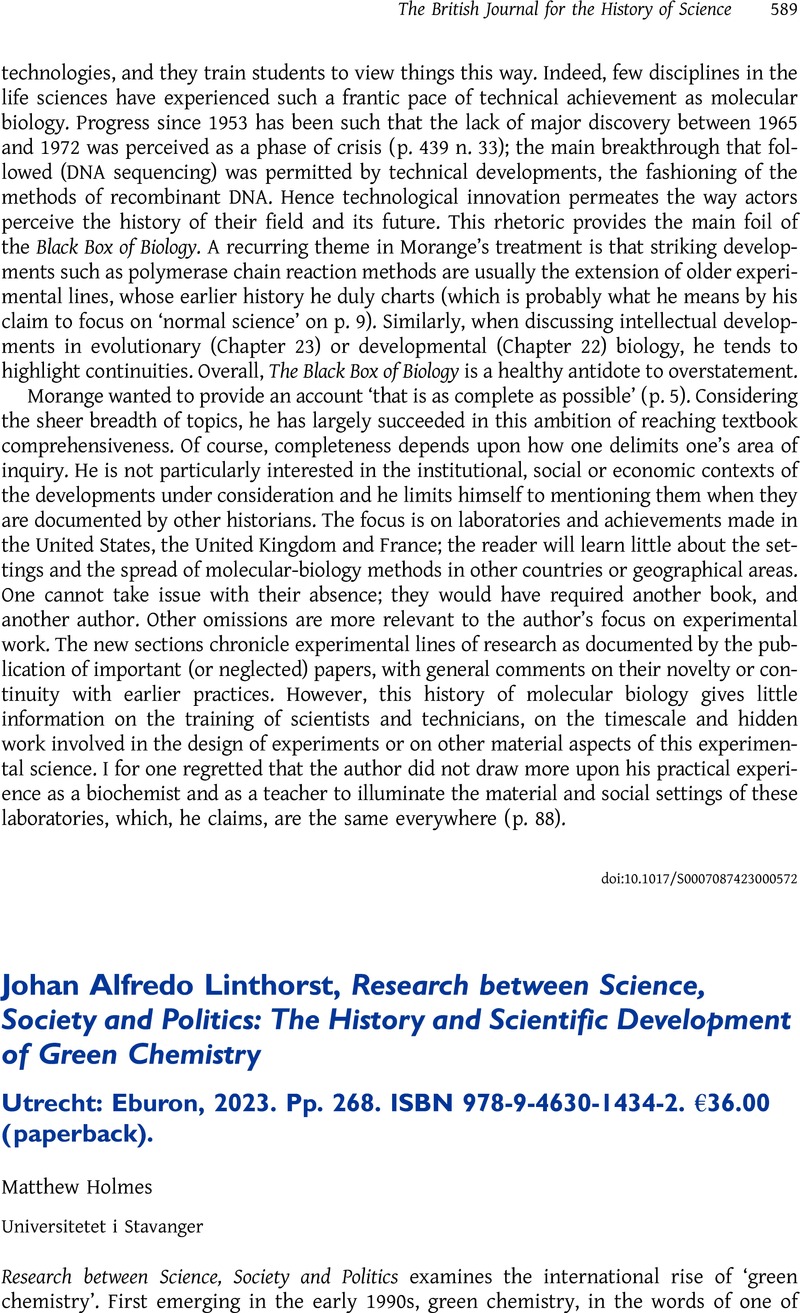No CrossRef data available.
Article contents
Johan Alfredo Linthorst, Research between Science, Society and Politics: The History and Scientific Development of Green Chemistry Utrecht: Eburon, 2023. Pp. 268. ISBN 978-9-4630-1434-2. €36.00 (paperback).
Review products
Johan Alfredo Linthorst, Research between Science, Society and Politics: The History and Scientific Development of Green Chemistry Utrecht: Eburon, 2023. Pp. 268. ISBN 978-9-4630-1434-2. €36.00 (paperback).
Published online by Cambridge University Press: 20 October 2023
Abstract
An abstract is not available for this content so a preview has been provided. Please use the Get access link above for information on how to access this content.

- Type
- Book Review
- Information
- The British Journal for the History of Science , Volume 56 , Special Issue 4: The Art of Gathering: Histories of International Scientific Conferences , December 2023 , pp. 589 - 591
- Copyright
- Copyright © The Author(s), 2023. Published by Cambridge University Press on behalf of British Society for the History of Science



